Neil P. Anderson was born in Tennessee in 1847 and came to Fort Worth in 1878 and eventually became one of the most prominent cotton brokers in Texas.
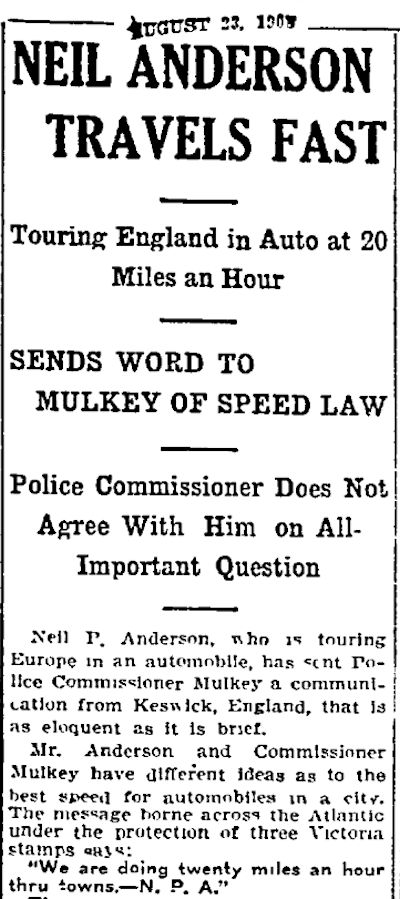 In 1908 Anderson also was an early fan of fast automobiles.
In 1908 Anderson also was an early fan of fast automobiles.
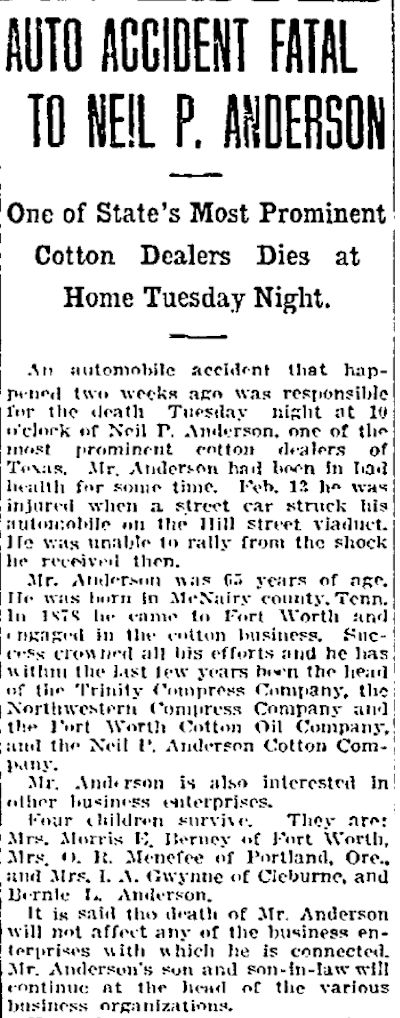 And it was in an automobile that Neil P. Anderson was killed in 1912 when his car was hit by a streetcar on the Hill Street (Summit Avenue today) viaduct over the Texas & Pacific railroad tracks. The cotton business he founded was carried on by his son and son-in-law, Bernie Anderson and Morris Berney. The two men also developed real estate on the West Side and operated a public golf course on which Ridglea Country Club is located today. Bernie Anderson Avenue leads to the country club. Clip is from the February 28 Star-Telegram.
And it was in an automobile that Neil P. Anderson was killed in 1912 when his car was hit by a streetcar on the Hill Street (Summit Avenue today) viaduct over the Texas & Pacific railroad tracks. The cotton business he founded was carried on by his son and son-in-law, Bernie Anderson and Morris Berney. The two men also developed real estate on the West Side and operated a public golf course on which Ridglea Country Club is located today. Bernie Anderson Avenue leads to the country club. Clip is from the February 28 Star-Telegram.
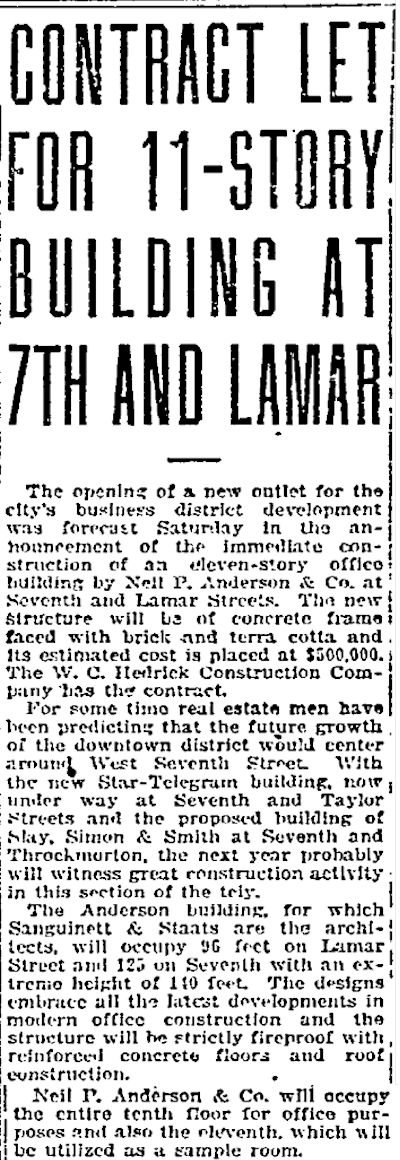 On November 30, 1919 the Star-Telegram announced that Neil P. Anderson & Company would build an eleven-story, $500,000 ($6.6 million today) home on West 7th Street at Lamar. The building would be built by the construction company of Wyatt Hedrick.
On November 30, 1919 the Star-Telegram announced that Neil P. Anderson & Company would build an eleven-story, $500,000 ($6.6 million today) home on West 7th Street at Lamar. The building would be built by the construction company of Wyatt Hedrick.
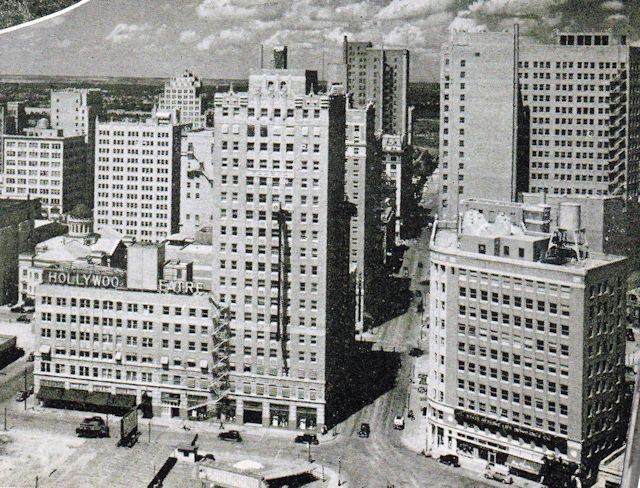 The Neil P. Anderson Building (lower right) would be an early component of what would become the 7th Street “canyon” along with the Electric Building, Worth Hotel, First National Bank, Fort Worth National Bank, Star-Telegram Building, Fair Building, Farmers and Mechanics National Bank, Continental National Bank, Oil and Gas Building, and Fort Worth Club.
The Neil P. Anderson Building (lower right) would be an early component of what would become the 7th Street “canyon” along with the Electric Building, Worth Hotel, First National Bank, Fort Worth National Bank, Star-Telegram Building, Fair Building, Farmers and Mechanics National Bank, Continental National Bank, Oil and Gas Building, and Fort Worth Club.
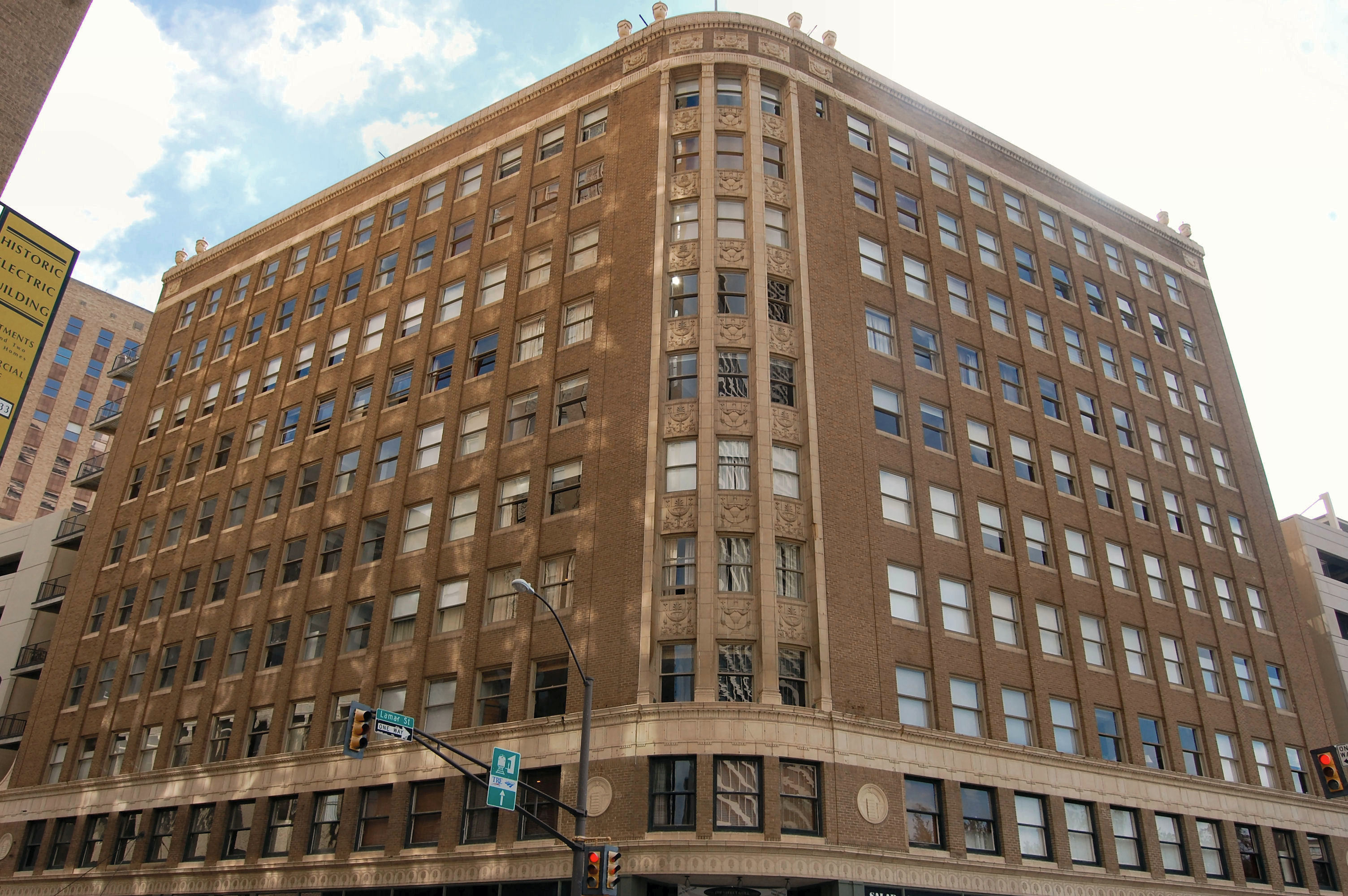 The front of the building conforms to the obtuse angle of the intersection of West 7th and Lamar streets.
The front of the building conforms to the obtuse angle of the intersection of West 7th and Lamar streets.
During its construction the building was in the news more than it wanted to be: One bricklayer fell to his death, one pedestrian was robbed while walking through the covered passage past the construction site, two more pedestrians claimed to have been robbed in the passage but were later charged with staging the robbery to illegally dispose of Liberty Bonds.
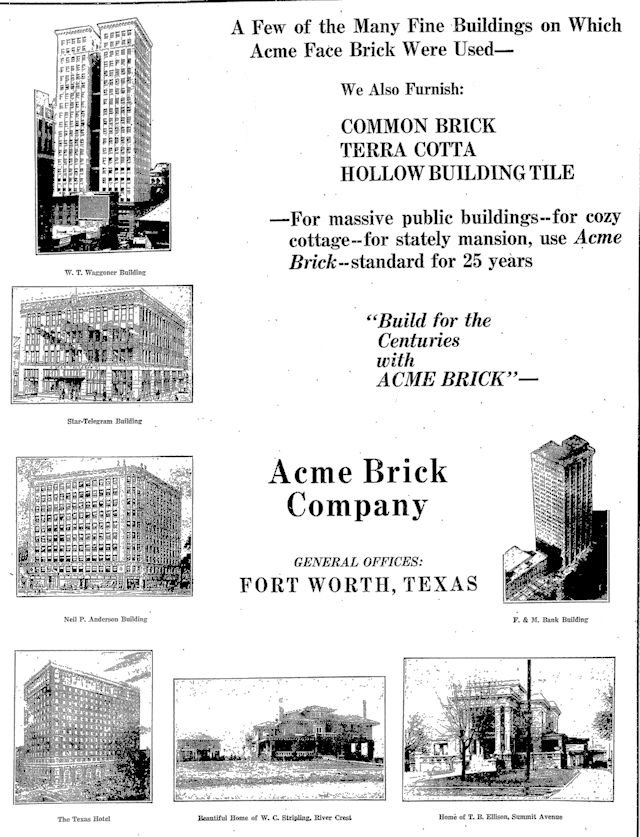 On May 29, 1921 Acme Brick Company featured the Anderson building among five new buildings downtown, all of them designed by Sanguinet and Staats: Star-Telegram Building, Farmers and Mechanics National Bank Building, Waggoner Building, and Texas Hotel.
On May 29, 1921 Acme Brick Company featured the Anderson building among five new buildings downtown, all of them designed by Sanguinet and Staats: Star-Telegram Building, Farmers and Mechanics National Bank Building, Waggoner Building, and Texas Hotel.
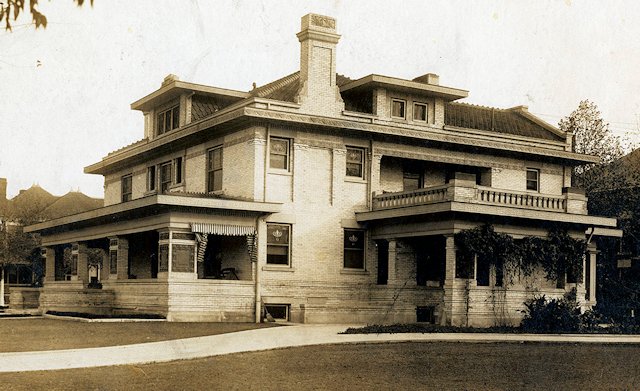
Neil P. Anderson built this house at 1251 Pennsylvania Avenue on Quality Hill in 1906. (Photo from University of Texas at Arlington Libraries.)
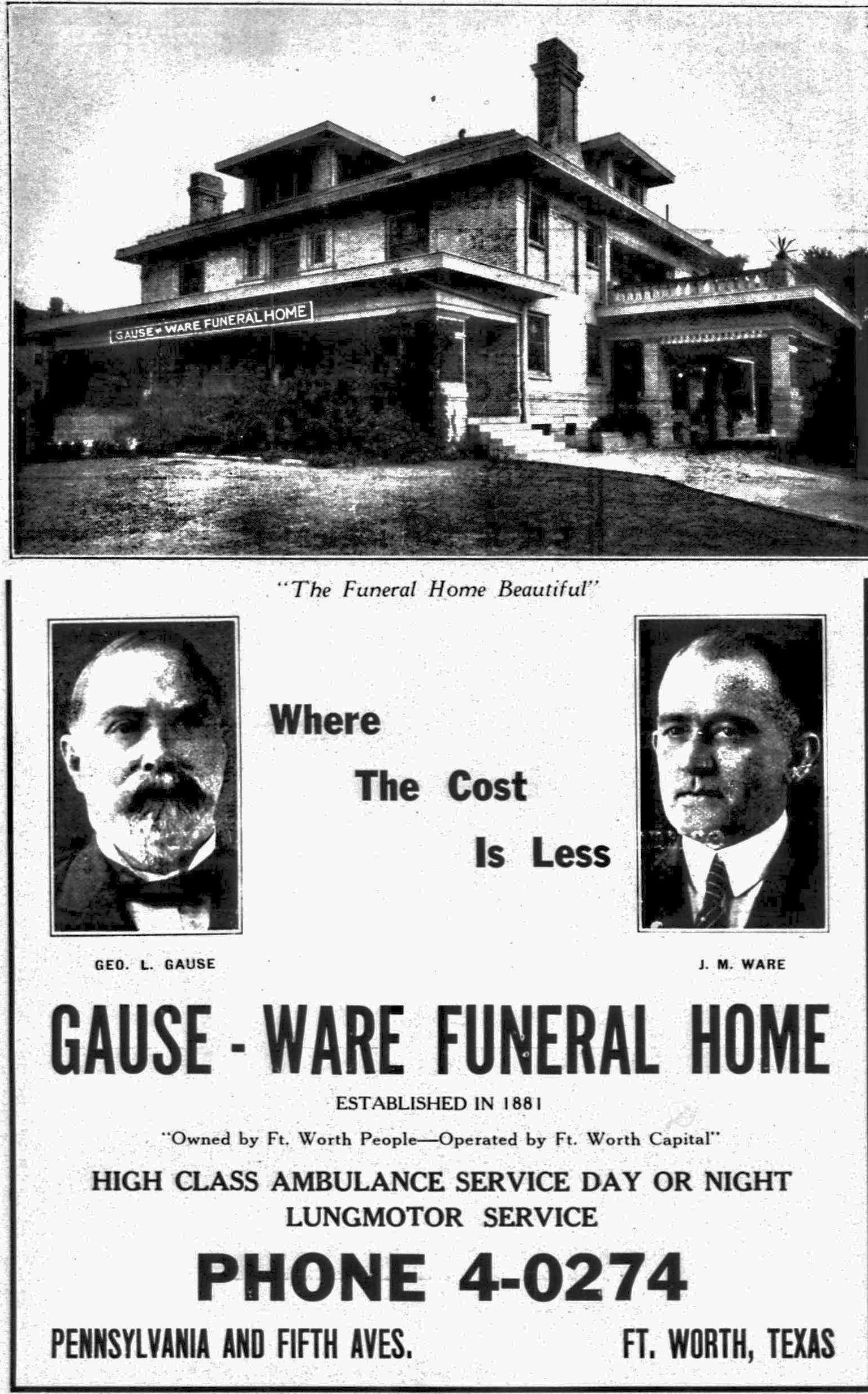 The house later became the home and business location of undertaker George Gause.
The house later became the home and business location of undertaker George Gause.
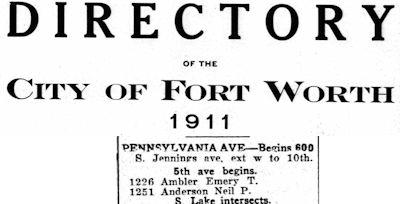 Anderson, like neighbor Winfield Scott at Thistle Hill, did not get to live long in his grand new home.
Anderson, like neighbor Winfield Scott at Thistle Hill, did not get to live long in his grand new home.
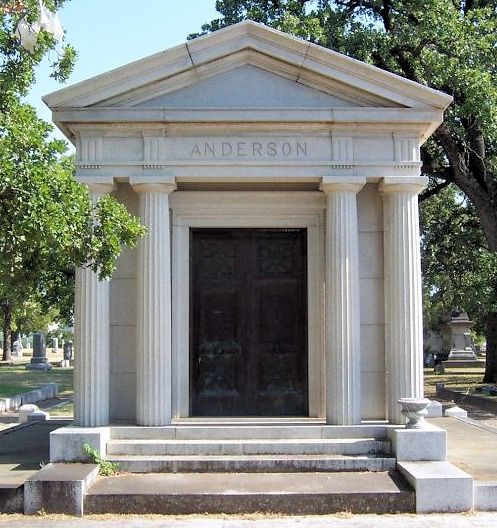 Anderson is buried in Oakwood Cemetery.
Anderson is buried in Oakwood Cemetery.
The Neil P. Anderson Building now houses condominiums.
Some views of the Neil P. Anderson Building:
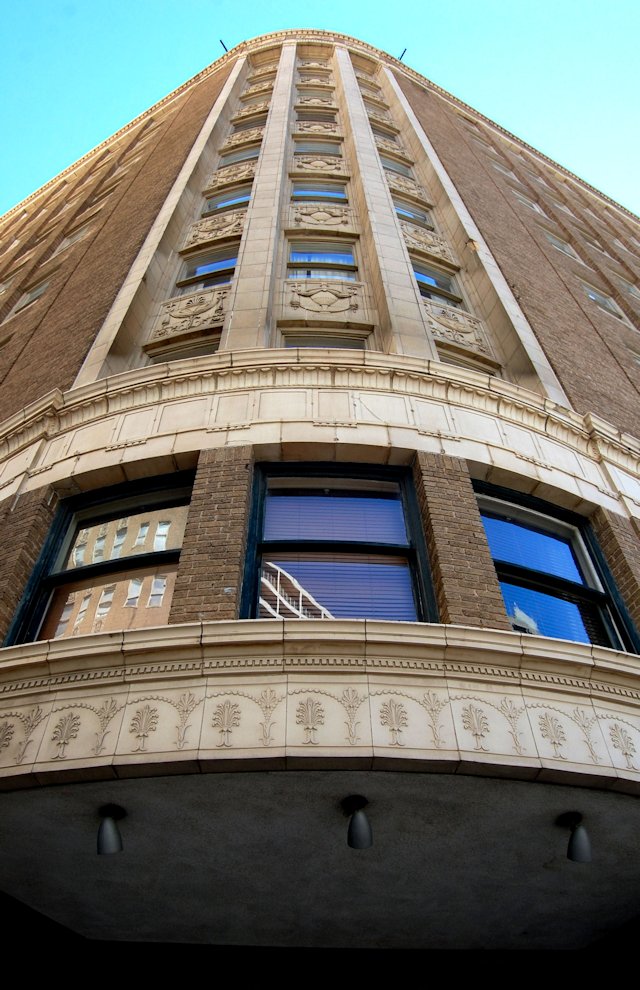 The building’s front follows the curve of the intersection of West 7th and Lamar streets.
The building’s front follows the curve of the intersection of West 7th and Lamar streets.
 Two bas-reliefs flanking the entrance feature bales of cotton.
Two bas-reliefs flanking the entrance feature bales of cotton.
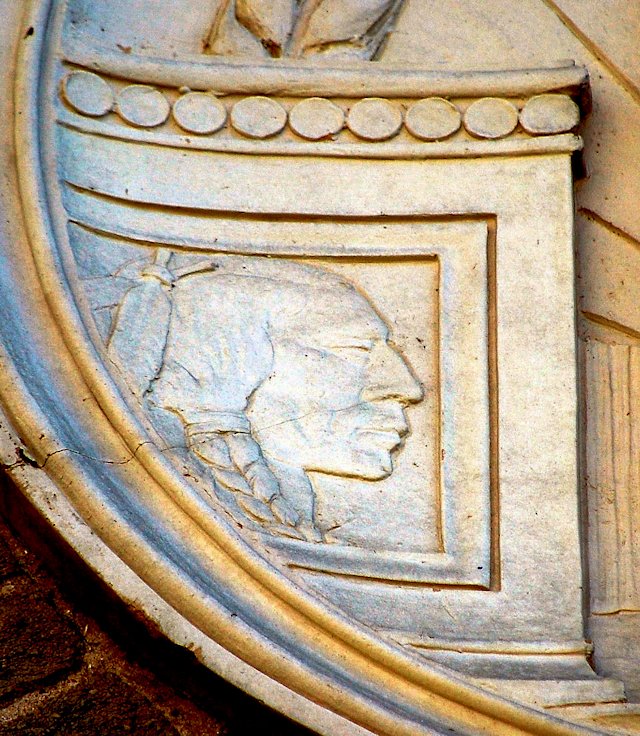 A detail of the bas-relief.
A detail of the bas-relief.
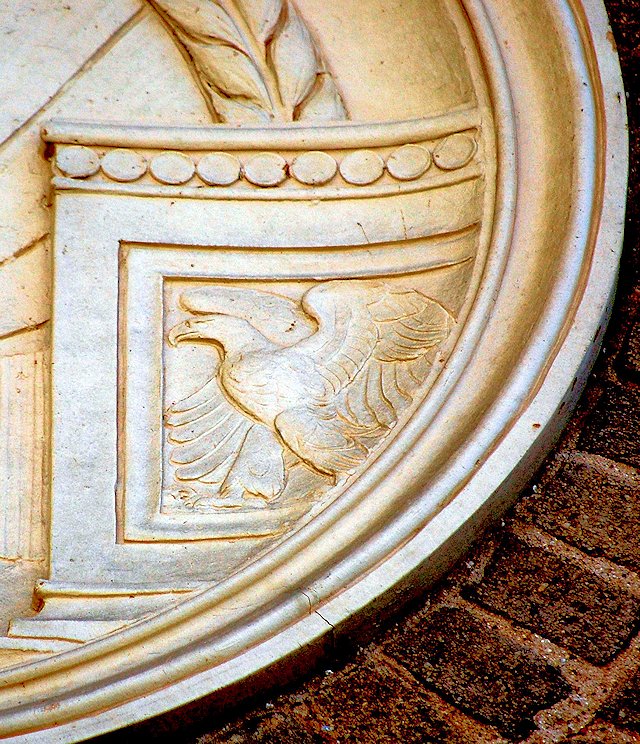 Another detail of the bas-relief.
Another detail of the bas-relief.

 Classic Sanguinet and Staats.
Classic Sanguinet and Staats.






In the early 1980’s I worked for Freese and Nichols Engineering. Our offices were in the Niel P. Anderson Building along with Koslow’s Furs. The building was originally used as the Fort Worth Cotton exchange and had the original skylights in the top floor. apparently the natural light was needed during the grading process of the cotton. I noticed that the building now contains condominium.
Interestingly, when I was in treatment at the MD Anderson Cancer hospital in in Houston, I was curious about who MD Anderson was. When I read that he was a cotton broker I immediately wondered if he was any relation to our cotton broker Neil P Anderson. Turns out they were born in the same town in Tennessee, I dug some more and learned that they were cousins. Cotton was the family business and the cousins pursued it separately in two Texas cities. MD was far more successful and left his vast fortune, said to be over $40 million to a charitable trust that endowed MDAnderson hospital. I’ve never seen this link described anywhere and felt like quite a history sleuth when I stumbled upon it.
That’s deep digging, Tim. As common as that surname is, finding that connection is like finding a needle in a haystack. Or a cotton field.
Hi,
I found your article while researching my family tree. Turns out that Neil Pubilus Anderson is my 2x great uncle. Not surprising as he had about 10 siblings! Looks like he was the only one that made good.
Thanks for keeping the past alive.
peace,
Lin
Thanks, Lin. He was a big part of early Fort Worth history.
I;m related as well….contact me if you want.